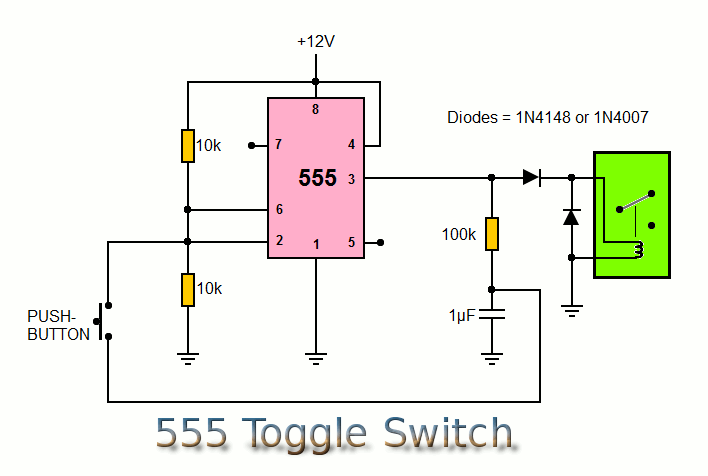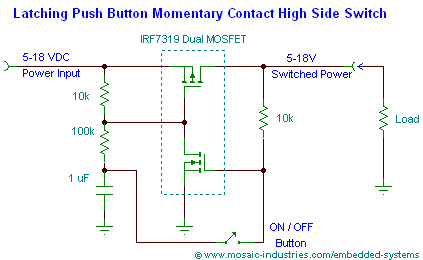Rocinante
Well-known member
I've been prototyping a monitor controller.
Ive been trying various micros as welll as teensy and arduinos for my in and out selection. So its 4 in and 4 out using momentary switches because they look pretty.
Does anyone see any problem using four 555 relay toggle circuits similar to the one below but multiplied by 4, instead of say cd4043 into uln 2803?
I'm not so sure the part count is more or less, (it's probably less with the micros)
I tried Google. There are no 4 channel 555 circuits I could find.

Ive been trying various micros as welll as teensy and arduinos for my in and out selection. So its 4 in and 4 out using momentary switches because they look pretty.
Does anyone see any problem using four 555 relay toggle circuits similar to the one below but multiplied by 4, instead of say cd4043 into uln 2803?
I'm not so sure the part count is more or less, (it's probably less with the micros)
I tried Google. There are no 4 channel 555 circuits I could find.







